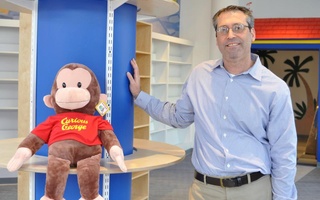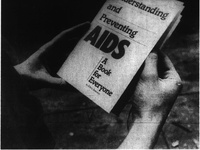Even before the AIDS crisis reached a fever pitch in the mid-1980s, researchers began to notice the increased frequency of the new and mysterious infection.
At the time, only the Center for Disease Control outranked Harvard in the number of scientists involved in AIDS research.
Harvard School of Public Health Professor Myron E. Essex first became involved in AIDS research after the CDC noted the disease’s growing prevalence.
Essex says that many research teams drew from their areas of expertise to explore the pathology of the virus.
“A lot of discussion was about what the cause might be and ... different groups starting to work on different hypotheses,” Essex says.
Multimedia
Drawing from his background in virology, Essex’s team theorized that the disease was rooted in infected T4 blood cells.
Meanwhile, Harvard Medical School Professor Martin S. Hirsch began researching the development and spread of HIV in 1981.
“I would say that our biggest contribution in the field was developing therapies and particularly the concept of combination therapies of HIV infection,” Hirsch says.
Medical School Professor Jerome E. Groopman says he remembers that period vividly.
“[We] were very committed in terms of AIDS,” he says, adding that researchers were concerned not only with the physiological effects of AIDS, but also the “discrimination, stigmatization, and profound misunderstanding of the disease.”
Even for researchers at the Medical School and School of Public Health, the anxiety stemming from the unknown was nearly palpable.
“There was fear—and an understandable fear—that one was dealing with a virus and nobody was quite sure what the virus was,” Hirsch recalls.
And even among the medical community, prejudice was a factor.
“There were physicians who didn’t want to see the patients or operate on the patients,” Hirsch says. “And they didn’t want laboratories next to their own laboratories that were doing research on AIDS.”
Groopman says that a homophobic culture and unfounded fears about potential contamination contributed to wariness within the medical community about treating AIDS patients.
Read more in News
Students Infuriated After Cue Guide Responses AlteredRecommended Articles
-
Lights Take HYPs; Heavies Persevere1996 Sports Statistics Record: Lights--3-0, 3-0 regatta; Heavies--3-3, 1-4 Lights Coach: Charlie Butt Heavies Coach: Harry Parker 1997 Consistency, consistency,
-
Centers in Africa Fight HIV/AIDSEarlier this year, Harvard’s two HIV/AIDS research centers in Africa each spun off limited liability companies, a strategic move that will open up funding streams that had previously been off-limits due to federal restrictions. For the 120,000 AIDS orphans living in Botswana, the potential funding increase could speed further advances in research as well as public health initiatives.
-
 Ed School Screens Bullying Film
Ed School Screens Bullying Film -
 ‘Bully’ Targets Problem, but not Solution
‘Bully’ Targets Problem, but not Solution -
Curious George Reopens, Excited To Be BackCurious George Books & Toys, a once-popular specialty store located at 1 JFK Street, reopened last Wednesday under new ownership.
-
 Square Personality: Adam S. Hirsch
Square Personality: Adam S. Hirsch














